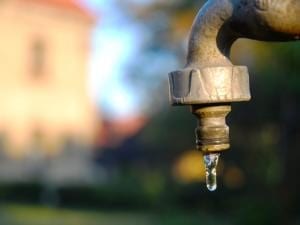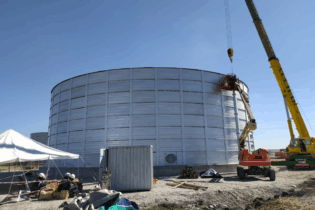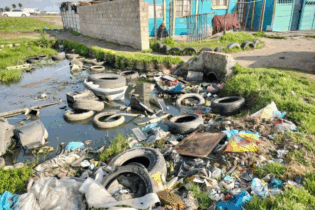SA’s water treatment sector has the collective knowledge, technology and capacity to solve South Africa’s water and wastewater treatment crisis in as little as three years.
This is according to stakeholders set to participate in the IFAT water treatment and recycling trade fair.
South Africa’s dams, rivers, wastewater systems and water distribution systems are in a dire state, but the solutions to these challenges are readily available within the country.
This is according to water sector experts who were speaking ahead of IFAT Africa.
IFAT Africa is the water, sewage refuse and recycling industry’s annual trade fair and conference, which is set to take place in Johannesburg in July 2019.
Unless urgent action is taken, South Africa’s looming water crisis will prove far more devastating than the power crisis, potentially crippling the economy and costing lives, says Eric Bruggeman, CEO of the South African Capital Equipment Export Council (SACEEC).
“The majority of our dams, water treatment facilities and wastewater systems are over 30 years old, with some as old as 100 years. Inadequate maintenance has been done in the past 20 years and the population has virtually doubled since this infrastructure was installed, so the existing infrastructure cannot cope with demand.
“As an arid country, we have to provide more dams in catchment areas and maximize the water we have. On top of that, leaks, contamination and a failure to recycle water mean we are losing a large proportion of the available water. The situation is frightening,” he says.
Deploy private sector experts
“To address the situation, an incredible amount of work must be done on maintenance, storage capacity must be upgraded and increased, new dams must be built and ageing pipes must be re-laid. Sewage must be addressed – you can’t have effluent running through the streets and into the dams. Water should be the top priority from national down to municipal level,” Bruggemans says.
However, in the face of a lack of resources, the public sector needs to be looking to the private sector for assistance.
“Budget must be made available and the private sector should be allocated the projects. With the right budget, the private sector could fix the problems in under three years.”
Chemical engineer Annejan Visser, a process engineer in business development for Quality Filtration Systems (QFS), says while the country is in dire need of solutions, too much time and effort is being dedicated to an outdated consulting, brick and mortar civil approach to water treatment.
“Solutions are now available in South Africa that could address water treatment problems far faster and much more cost effectively,” he says.
“The most important thing to be done now to address our water problems, clean up rivers and assure water security is simply to stop talking about it and take action.”
He notes that South Africa has a highly competitive and advanced water and wastewater treatment sector, with the skills, capacity and technologies to overcome the country’s water challenges.
“If the funding was channelled into action, and our private sector stakeholders were mobilised, collectively, we could probably overcome water and wastewater treatment challenges in as little as one to three years,” Visser says.
Progress hurdles
While private sector may have the capacity to address the challenges, no clear models exist for such engagement, and local regulations hamper the use of a great deal of locally available equipment.
Mark Madlener, General Manager at Conns Manufacturing, notes that many South African private sector contractors are engaged in major projects in neighbouring countries, where they are able to deliver infrastructure quickly and often at a lower cost that what the South African government is paying.
This, he explains, is partly due to the local content rule, which specifies that 85% of the project should comprise local content. This limits the use of advanced – and often cheaper – imported components, can increase the cost of projects and can also slow them down as contractors source appropriate components.
“In a country with a massive budget deficit, we need to save money where we can and give more thought to who the suppliers are, is the product locally available, and are the prices reasonable. Across our borders where the same rules aren’t in place, they are just looking to get the plant at the best price and best quality,” he says.
Carl Haycock, CEO of Talbot & Talbot, says: “We could potentially see private sector stepping in to help address the problems, but it would be very difficult for industry to take over completely and provide a solution that a municipality or public sector service provider should deliver.”
Haycock notes that with an estimated R33 billion investment needed each year over the next ten years to recover and protect the country’s water security, a great deal of work needs to be done.
“But it is crucial that action is taken. Unlike electricity, which you can generate yourself when supplies are not available, water cannot be generated. It’s a resource that is already under a great deal of pressure and it will become increasingly scarce.”
Price hikes loom
He believes that water prices are set to soar as treated water supplies come under pressure.
“We know our water resources are under pressure in various ways and for various reasons. There is increasing demand for the limited quantities of serviced water available to us due to population growth and industrial growth, but the amount of water available has remained fairly static. This is exacerbated by droughts as we have seen in the Western Cape and KwaZulu Natal. When normal rainfall doesn’t occur, water very quickly becomes a scarce commodity, with the situation bordering on a crisis.”
“We have seen water as a relatively cheap resource in the past, and we haven’t implemented appropriate measures, but as the cost of water increases, we will become more prudent.”
Haycock expects to see fairly steep price increases over the next few years: “We have done a lot of data modelling, and found that over the last five years, most municipalities have seen increases of between 10 – 14%. But with consumers expected to start paying for water infrastructure, we can expect double digit price increases for many years to come,” he says.
Talbot & Talbot, Conns Manufacturing and Quality Filtration Systems (QFS) will be among over 100 exhibitors showcasing the latest water treatment solutions and services at IFAT Africa from July 9 – 11 at the Gallagher Convention Centre in Midrand.








